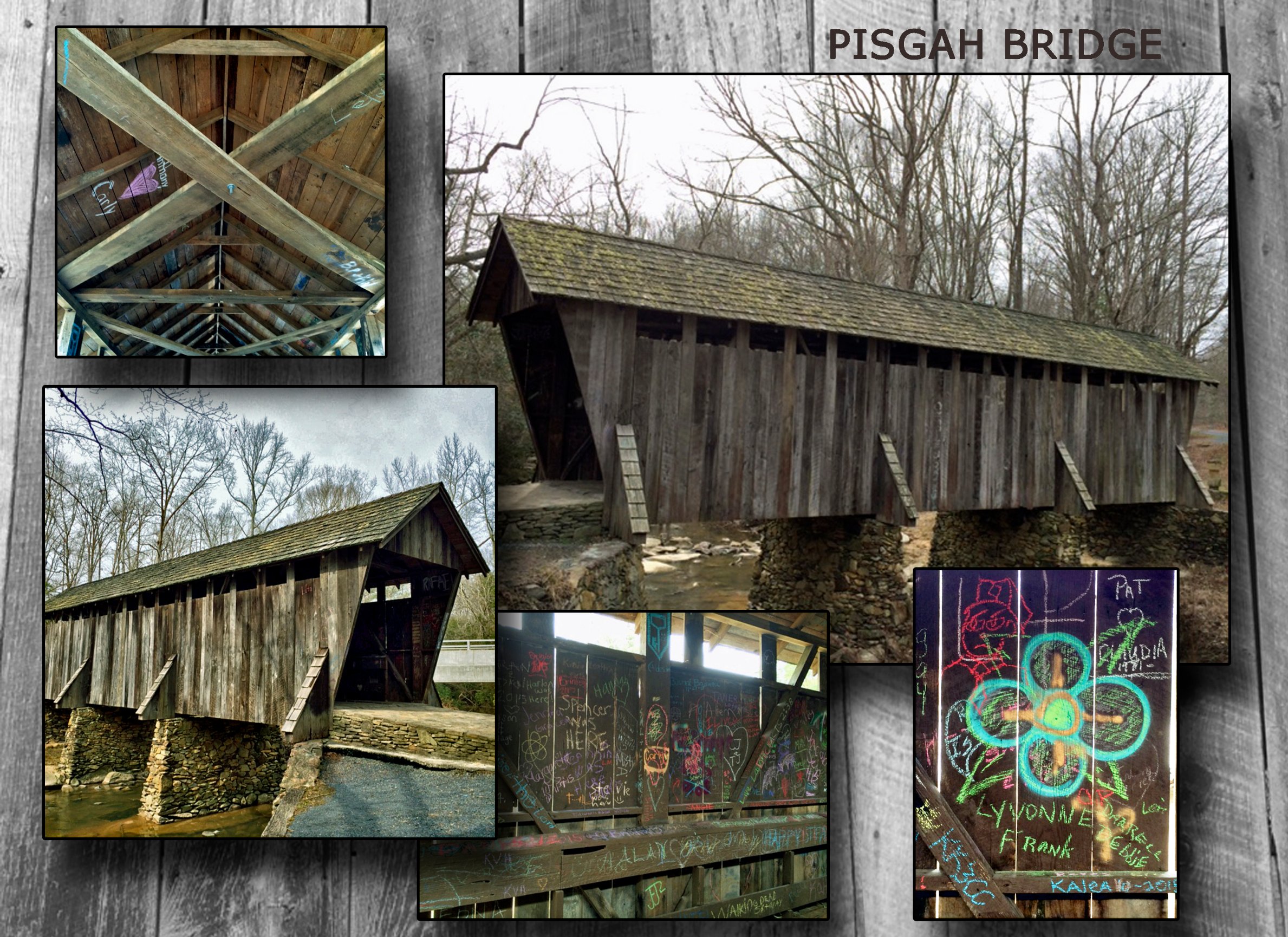Dis-covered Bridges
Friday, February 26, 2016 | By: Austin Rese
We’ve all done it. While riding down the highway we’ve passed a sign denoting a national landmark and wondered what it might be. Our schedules often prohibit us from really ever experiencing it.
With cabin fever nibbling at me, I decided to visit one of those historic locations: Bunker Hill Covered Bridge. It is located in Claremont, North Carolina. With a little research, I discovered that, at one time in North Carolina’s history, the number of such structures was in the 100’s. Today, only 2 remain in the state.

When you think about it, covered bridges were the cutting-edge technology of their day. They improved travel, speed of communication, and life. While we marvel at the latest version of an iPhone or Fitbit, this was yesterday’s “Wow”. The life of an un-covered bridge was considered only 15-20 years, while a bridge with a roof and sides could see 100+ years. -- Sustainable technology, indeed!
Built in 1895 over Lyle Creek, it rests upon the historic Native American trail. This thoroughfare was a part of the American Revolutionary War, as it was here, British prisoners of the Battle of Cowpens were transported to Virginia for holding purposes. The bridge was built by Andy Ramsour, using the patented technology of (Civil War) Brigadier General Herman Haupt. It is the only remaining structure in the United States that exhibits the key engineering feature of “Improved Lattice Truss” timbers. General Haupt’s research concluded formulae for determining weight distribution and capacities. A series of lattice timbers and trunnels (oak wood pins, rather than nails) were used to construct this 91’ bridge cover.
Curiosity got the best of me. I had to see the second covered bridge still in existence within North Carolina: Pisgah Covered Bridge. This beautiful structure is located in the Uwharrie National Forest, near Asheboro. JJ. Welch built the original bridge in 1911 for $40. It was a means to improve the transportation of crops and produce to the nearby burgeoning community of Seagrove.

Over time, this particular bridge has experienced several catastrophic floods. However, none were as an unfortunate as the flood of 2003. Although it was destroyed, the following year it was reconstructed with over 90% salvaged, original materials. Today it is a protected landmark.
Much like Bunker Hill, it is no longer viable as a vehicular passageway; instead, it is a monument to experience by foot. Located within a miniature park setting, it is quite lovely.
Both bridges appear to be a magnet for graffiti. I have never been able to relate to the narcissistic thrill of defacing valuable artifacts. I suppose these same individuals would spray paint their initials on the back of their grandmother’s head. Nonetheless, these covered bridges are truly a bond to our history and should be both enjoyed and savored.
This was a Moment in America.
Intrigued? For additional information and literary credit, please visit the inscribed links for each location.

Leave a comment
0 Comments